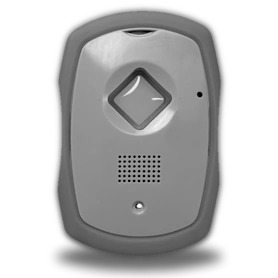The Role of Physical Therapy in Treating Seniors Balance Issues
Our Key Takeaway
Physical therapy is essential for seniors experiencing balance issues. Through personalized assessments and targeted exercises, such as strength training, stretching, and coordination drills, physical therapists help improve stability and reduce fall risk, enhancing overall mobility and independence.
Mobility complications are a threat mainly because elderly people have to struggle to maintain their balance, hence falling or becoming prone to injuries.
Physical therapy helps in managing these seniors balance issues as it offers specific strategies that enhance balance, strength, and coordination. By using different treatment plans, the elderly can be helped to regain balance and, therefore, avoid mobility disability.
Falls are a major cause of hospitalization due to injuries among elderly people in Canada. Physical therapy plays an important role in decreasing the risks of falls and enhancing safe mobilization.
Life Assure Product Quiz
Take our 30 second quiz and discover which Life Assure medical alert device is the right fit for you or a loved ones.
Life Assure Product Quiz
Take our 30 second quiz and discover which Life Assure medical alert device is the right fit for you or a loved ones.
How Does Physical Therapy Address Seniors Balance Issues?

Physical therapy for the elderly is an individualized and systematic plan to enhance the muscles and joint functions of seniors.
It starts with an assessment where a physical therapist health professional reviews the person’s physical capabilities and limits, balance problems, medical history and any other concerns the client may have.
Therefore, depending on the evaluation, the therapist plans a set of specific exercises and techniques for the senior’s therapy.
These are strength training exercises, balance exercises, and coordination exercises that are common with muscular diseases. Some of the training includes stretching, resistance training, and walking exercises to improve flexibility and pace.
The sessions can be conducted in a clinic or rehabilitation center and can be, at times, conducted at home.
In addition to the therapy, the seniors are often given home exercise programs that will help to enhance their gains between the sessions to ensure the success is consistent in the long run.
Understanding How Physical Therapy Helps in Treating Seniors Balance Issues
Here is how physical therapy helps in treating seniors balance issues.
Strengthens Muscles and Improves Flexibility
One of the fundamental approaches to the patient with balance disorder in physical therapy is to increase muscle strengthening of the postural and motor groups. With seniors, they realize that muscles become weak due to loss of muscle mass, and this contributes to the issues of balance.
Physical therapists can establish specific exercises that address the leg, core, and back muscles, which are crucial in offering stability.
Flexibility exercises are also incorporated to increase flexibility, which helps reduce stiffness. Squats, leg lifts, and heel raises are examples of functional resistance exercises that ensure that older people gain strength once again.
Enhances Coordination and Proprioception
Coordination function and proprioception, which enable the body to become aware of its position in the environment, generally reduce in old age, hence affecting balance.
Performing certain activities, such as standing on one leg, balancing on balance boards, or walking on balance beams, aids seniors in enhancing their body awareness.
By enhancing proprioception, seniors will be able to respond effectively to changes in an environment, such as when they step on a slippery surface or try to maneuver on uneven terrain.
Improves Gait and Balance
Some senior citizens make changes in their style of walking or gait as they advance in age. Physical therapy enables the correction of these changes. For example, in gait analysis, areas of improvement are determined for the senior.
A physical therapist may also employ gait training activities, including walking on various terrains, altering the step length, turning, etc. Enhancing the gait also requires changes in posture and placement of the feet.
Therapists explain to the seniors how they should train to walk correctly so that their body weight can be balanced and the chances of falling reduced. It is these changes in the mechanics of gait that result in safer walking patterns and enhanced self-confidence in movement.
Reduces the Risk of Falls
While physical therapy for seniors has many benefits, the most significant being the possibility of preventing falls. More so, falls are another leading issue for the elderly as they may lead to fractures or head injuries.
In treating patients, physical therapy addresses issues that are the causes of falls, such as weakness, poor coordination, and reduced mobility.
Some measures for the prevention of falls also include allowing older persons to access environmental spaces that need to be modified to avert disasters and also using walking sticks or wheelbarrows whenever one is weak.
Provides Effective Home Exercise Programs
The treatment is not just conducted in the clinic since physical therapists give seniors home exercise programs to ensure that they are consistent with what they have been taught.
They last for a specific period depending on the need of the individual and concentrate on movements that can be practiced from the comfort of their homes to keep on improving balance.
A usual home exercise program contains some movements like flexibility exercises, muscle strengthening, and the ones that help maintain balance.
They are helpful for the elderly as these exercises are repeated and help build endurance and strength among them. The ability to perform these exercises at home helps to maintain long-term efforts toward improving balance.
Improves Functional Independence
Another advantage of physical therapy is that it can help to regain and retain the ability to perform several tasks. The overall physical functionality increases, and this enables seniors to perform their ordinary tasks like dressing, cooking, and shopping, among others.
Structured and unstructured caregivers assist independent-living seniors in going through exercises to enable them to manage such tasks independently without the assistance of caregivers, hence improving their quality of life.
Physical therapy also focuses on issues that may stem from certain activities, to advise and provide workarounds that enable the elderly to go around their limitations of physical mobility.
Addresses Underlying Medical Conditions
Problems with balance are associated with such health issues as arthritis, a stroke, Parkinson’s disease, or vertigo. These created problems can be approached through the application of physical therapy to cater to specific concerns that may affect balance.
For instance, vestibular physical therapy is useful in the treatment of balance disorders caused by the inner ear, and stroke physical therapy will involve regaining balance and mobility after a stroke.
This is far superior to managing the symptoms of one’s balance problems because physical therapy targets the source of the problem. This holistic approach works to combat the balance issues that the elderly may have, providing them with lasting mobility solutions.
Conclusion
Well-structured physical therapy is a critical facet of care given to elderly patients, especially in managing seniors balance issues.
By doing targeted exercises and receiving individualized attention, the elderly patient will be able to enhance his/her physical abilities and move more freely and more independently.












 Get Help With The Push Of
A Button
Get Help With The Push Of
A Button















